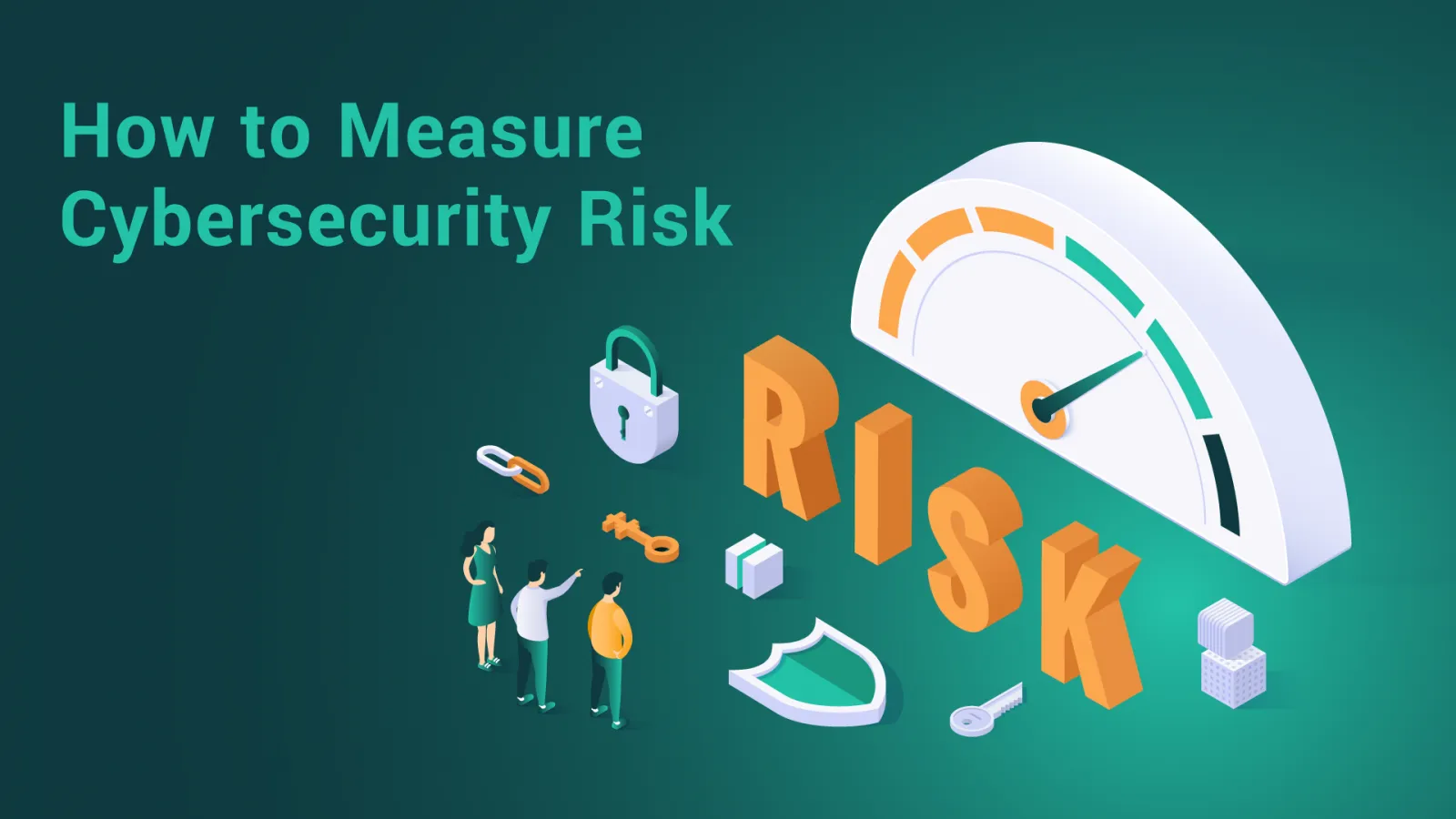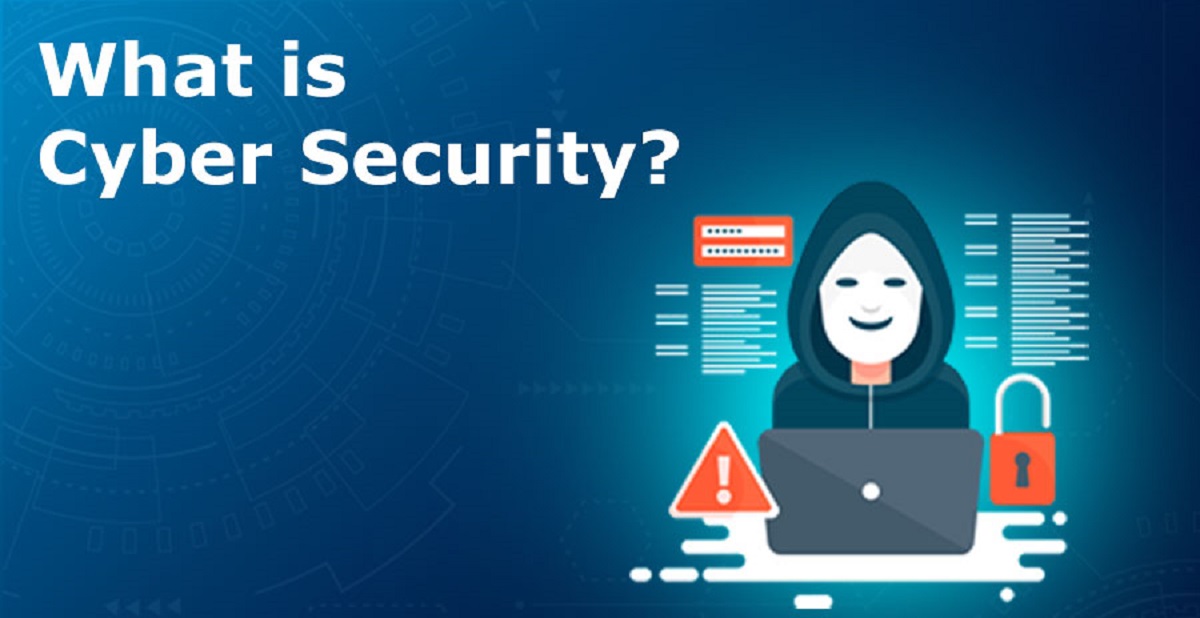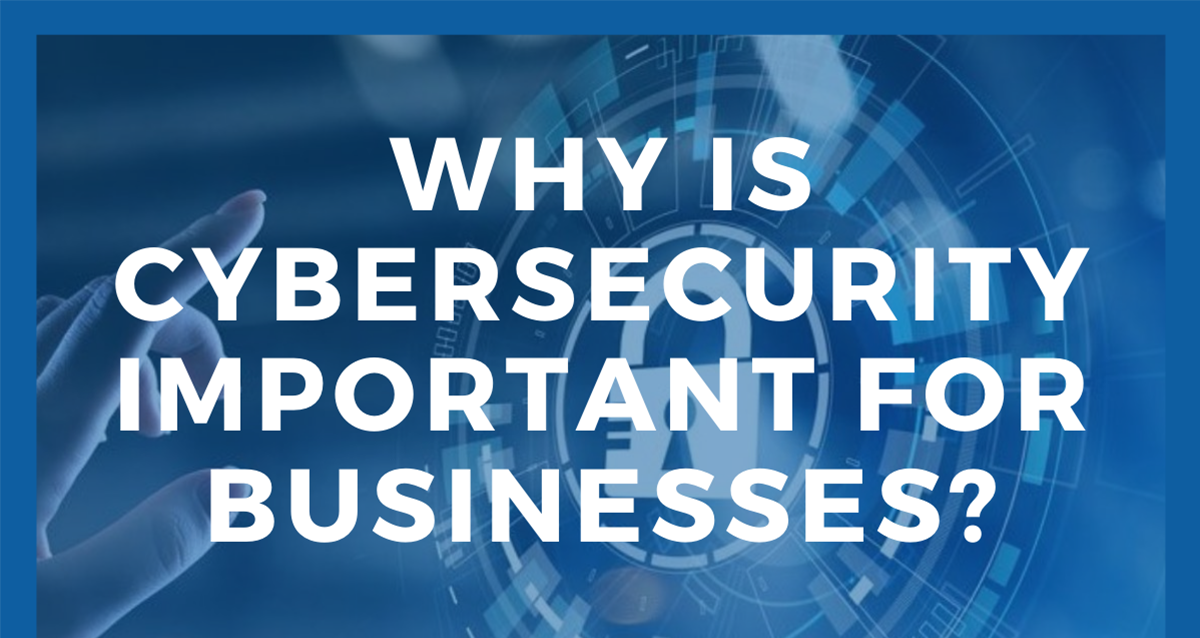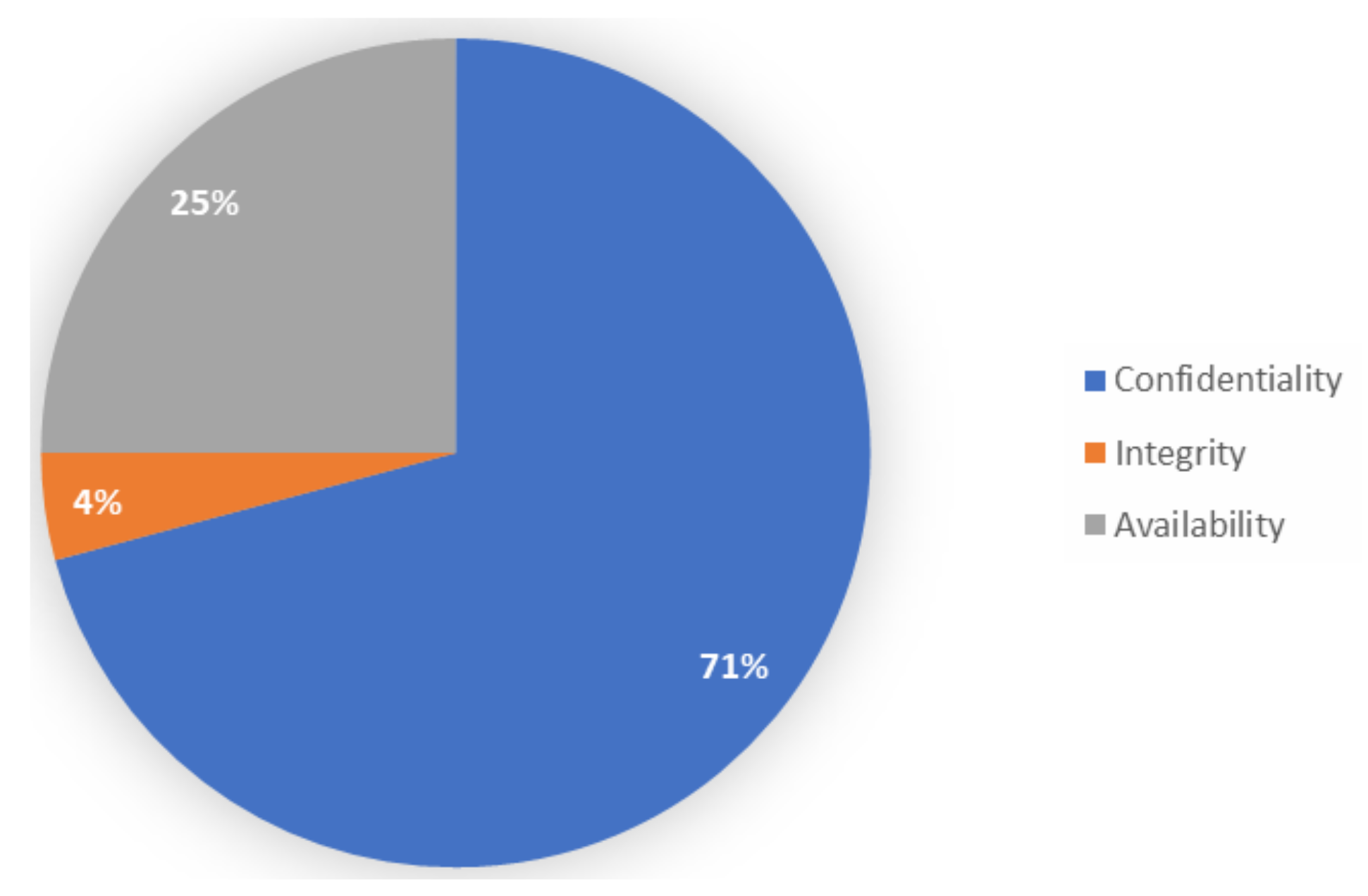Introduction
Cybersecurity plays a crucial role in today’s digital landscape, where organizations and individuals face an ever-increasing number of cyber threats. As technology advances, so do the methods employed by cybercriminals, making it essential to have robust cybersecurity measures in place. However, it is not enough to merely implement security measures; it is equally important to measure and evaluate the effectiveness of these measures.
Measuring cybersecurity provides valuable insights into the security posture of an organization. It enables organizations to identify vulnerabilities, assess risks, and make informed decisions to enhance their security posture. By having a clear understanding of their cybersecurity capabilities, organizations can prioritize resources and investments, ensuring that they are adequately protected against potential threats.
Moreover, measuring cybersecurity helps in setting measurable goals and objectives, tracking progress, and demonstrating the return on investment (ROI) of cybersecurity initiatives. It enables organizations to improve their security practices continuously, adapt to emerging threats, and demonstrate their commitment to safeguarding sensitive data.
By leveraging key metrics, organizations can gain insights into different aspects of cybersecurity, including vulnerability management, incident response, user awareness and training, security policy compliance, threat intelligence, network and system security, data protection and privacy, business continuity and disaster recovery, and compliance with regulatory standards.
This article will explore these key metrics and provide guidance on establishing a cybersecurity measurement program to effectively monitor and enhance cybersecurity efforts. By implementing these strategies, organizations can strengthen their defenses and protect their digital assets from evolving cyber threats.
Importance of Measuring Cybersecurity
Measuring cybersecurity is of paramount importance for organizations of all sizes and sectors. It provides several benefits that contribute to a strong and resilient security posture. Let’s explore some of the key reasons why measuring cybersecurity is crucial:
1. Risk Assessment: Measuring cybersecurity allows organizations to conduct a comprehensive risk assessment. By identifying and assessing vulnerabilities, organizations can prioritize their remediation efforts and allocate resources efficiently. This proactive approach helps mitigate potential risks before they can be exploited by cybercriminals.
2. Performance Evaluation: Measuring cybersecurity enables organizations to evaluate the effectiveness of their security measures. By monitoring key metrics and indicators, such as incident response time, detection rate, and patching speed, organizations can identify areas where improvements are needed. This evaluation helps refine strategies, optimize processes, and enhance overall security performance.
3. Investment Justification: Understanding the effectiveness of cybersecurity initiatives is essential for justifying investment in security measures. By measuring the impact of security investments, organizations can demonstrate the value and return on investment (ROI) to stakeholders. This information helps in securing necessary budget allocations and resources to maintain robust cybersecurity practices.
4. Compliance Requirements: Many industries have specific regulatory requirements for cybersecurity. Measuring cybersecurity helps organizations ensure compliance with these standards by tracking and reporting relevant metrics. This not only meets legal obligations but also instills confidence among customers, partners, and stakeholders that sensitive data is protected.
5. Continuous Improvement: Effective cybersecurity is not a one-time effort; it requires continuous improvement. Measuring cybersecurity provides organizations with ongoing feedback to refine security practices and adapt to evolving threats. Regular assessments can help identify emerging risks and enable proactive measures to enhance resilience.
6. Incident Response Efficiency: Measuring cybersecurity includes evaluating incident response capabilities. Organizations can track metrics such as mean time to detect (MTTD) and mean time to respond (MTTR) to incidents. By analyzing and optimizing these metrics, organizations can enhance their incident response efficiency and minimize the impact of potential breaches.
7. Stakeholder Assurance: Measuring cybersecurity provides stakeholders, including customers, partners, and investors, with assurances that an organization is actively monitoring and improving its security practices. This instills confidence in safeguarding sensitive information, establishing trust, and maintaining business relationships.
By measuring cybersecurity, organizations can gain valuable insights, adapt to emerging threats, and make informed decisions to protect their digital assets. It is an essential aspect of building a robust security posture in today’s evolving threat landscape.
Key Metrics to Measure Cybersecurity
Measuring cybersecurity requires a comprehensive approach that covers various aspects of an organization’s security capabilities. Here are some key metrics to consider when assessing and monitoring cybersecurity:
- Vulnerability Management: Track the number of identified vulnerabilities, their severity levels, and the time taken to patch or mitigate them. Measure the effectiveness of vulnerability scanning, remediation efforts, and the percentage of critical vulnerabilities resolved within a defined timeframe.
- Incident Response: Measure the mean time to detect (MTTD) and mean time to respond (MTTR) to security incidents. Evaluate the effectiveness of incident response plans, the speed and accuracy of incident detection, containment, and recovery processes.
- User Awareness and Training: Assess the completion rate of cybersecurity awareness training programs. Measure the frequency of simulated phishing campaigns and track the click-through rates. Regularly evaluate user knowledge and behavior to identify areas for improvement.
- Security Policy Compliance: Monitor the adherence to established security policies and procedures. Track the completion rate of security policy training and conduct regular audits to ensure compliance with internal and industry-specific standards.
- Threat Intelligence: Evaluate the effectiveness of threat intelligence platforms and services. Measure the accuracy and timeliness of threat intelligence updates and the ability to proactively mitigate emerging threats based on intelligence insights.
- Network and System Security: Monitor network traffic and measure the number of unauthorized access attempts, malware infections, and successful intrusions. Assess the effectiveness of firewall configurations, intrusion detection systems, and security incident monitoring tools.
- Data Protection and Privacy: Evaluate the effectiveness of data encryption, access controls, and data loss prevention measures. Monitor the number of data breaches, incidents involving sensitive information, and the response time to mitigate data security incidents.
- Business Continuity and Disaster Recovery: Track the uptime and availability of critical IT systems and infrastructure. Measure the recovery time objective (RTO) and recovery point objective (RPO) during disaster recovery drills and real incidents.
- Compliance with Regulatory Standards: Assess the organization’s compliance with industry-specific regulations, such as GDPR or HIPAA. Track the successful completion of compliance audits, the resolution of identified non-compliance issues, and the implementation of necessary controls.
These key metrics provide valuable insights into different facets of an organization’s cybersecurity posture. By regularly measuring and monitoring these metrics, organizations can identify areas for improvement, prioritize investments, and enhance their overall security capabilities.
Vulnerability Management
Vulnerability management is a critical aspect of cybersecurity, as it involves identifying and resolving vulnerabilities in a timely manner to minimize the risk of exploitation. Here are some key metrics to consider when measuring vulnerability management:
a. Number of Identified Vulnerabilities: Track the number of vulnerabilities identified through regular scanning and assessments. This metric provides an overview of the vulnerability landscape and helps organizations prioritize remediation efforts based on the severity and potential impact of each vulnerability.
b. Severity Levels: Categorize vulnerabilities based on their severity levels, such as critical, high, medium, or low. This classification allows organizations to allocate resources effectively and address the most severe vulnerabilities first, reducing the risk exposure.
c. Time to Patch or Mitigate: Measure the time taken to patch or mitigate identified vulnerabilities. This metric indicates the organization’s speed and efficiency in addressing vulnerabilities, minimizing the window of opportunity for potential exploitation.
d. Vulnerability Scanning Coverage: Evaluate the coverage and frequency of vulnerability scanning across the organization’s assets. Measure the percentage of systems covered by vulnerability scanning tools to ensure comprehensive visibility into potential weaknesses.
e. Critical Vulnerabilities Resolved: Assess the percentage of critical vulnerabilities that have been successfully resolved within a predefined timeframe. This metric focuses on addressing the most severe vulnerabilities promptly, reducing the organization’s risk exposure to potential attacks.
f. Patching Compliance: Measure the compliance with patching policies and timelines. Track the percentage of systems that have the latest patches installed, ensuring that the organization maintains an up-to-date and secure infrastructure.
g. Risk Reduction: Quantify the reduction in risk exposure over time as vulnerabilities are patched or mitigated. This metric helps demonstrate the effectiveness of vulnerability management efforts and drives continuous improvement in the organization’s security posture.
h. Vulnerability Remediation Process: Evaluate the efficiency of the vulnerability remediation process by measuring the average time taken to close vulnerabilities from the time of identification. Identify bottlenecks and areas for improvement to streamline the remediation process.
i. Vulnerability Management Metrics Benchmarking: Compare relevant vulnerability management metrics against industry benchmarks to gauge the organization’s performance and identify areas where improvements can be made.
By measuring these key metrics, organizations can effectively manage vulnerabilities, reduce risk exposure, and maintain a strong security posture. Vulnerability management is an ongoing process that requires continuous monitoring and timely remediation to stay ahead of potential threats.
Incident Response
Incident response is a critical component of a robust cybersecurity program. It involves the timely detection, containment, investigation, and recovery from security incidents. Measuring incident response allows organizations to assess and improve their ability to effectively manage and mitigate incidents. Here are key metrics to consider when measuring incident response:
a. Mean Time to Detect (MTTD): Measure the average time taken to detect a security incident from the moment it occurs. This metric provides insights into the efficiency of the organization’s monitoring systems and the effectiveness of early detection controls.
b. Mean Time to Respond (MTTR): Track the average time taken to respond to a security incident once it has been detected. This metric indicates the organization’s speed in initiating incident response activities and implementing necessary measures to contain and mitigate the incident.
c. Incident Response Team Activation Time: Measure the time taken to activate the incident response team once an incident is reported. This metric reflects the organization’s readiness and preparedness to respond to security incidents promptly.
d. Incident Response Plan Testing: Assess the frequency and results of incident response plan testing exercises, such as tabletop exercises and simulation drills. This metric helps evaluate the team’s ability to effectively respond to different types of incidents and identify areas for improvement.
e. Incident Classification: Categorize incidents based on their severity levels, such as critical, high, medium, or low. This classification helps prioritize incident response activities based on the potential impact and urgency of each incident.
f. Incident Containment Time: Measure the time taken to contain a security incident and prevent its further spread. This metric reflects the organization’s ability to isolate the affected systems and limit the potential damage caused by the incident.
g. Incident Investigation Time: Track the time taken to investigate and analyze a security incident. This metric helps assess the efficiency of incident response teams in gathering evidence, identifying the root cause, and understanding the extent of the incident.
h. Incident Resolution Time: Measure the time taken to fully resolve a security incident and restore affected systems and services to a secure state. This metric indicates the organization’s ability to recover from incidents and minimize the impact on operations.
i. Lessons Learned: Capture and analyze lessons learned from security incidents. Identify vulnerabilities or weaknesses in current processes, policies, or technologies, and implement necessary improvements to prevent similar incidents in the future.
j. Incident Response Team Performance: Evaluate the incident response team’s performance in terms of teamwork, communication, and adherence to established procedures. Conduct regular assessments and gather feedback from team members to improve overall incident response capabilities.
By measuring these key metrics and continuously refining incident response processes, organizations can enhance their ability to detect, respond to, and recover from security incidents effectively. Regular measurement and evaluation ensure the readiness and resilience of an organization’s incident response capabilities.
User Awareness and Training
User awareness and training are crucial components of a strong cybersecurity program. Human error and lack of awareness can often lead to security breaches. Measuring user awareness and training helps organizations evaluate the effectiveness of their efforts in educating and empowering users to make informed security decisions. Here are key metrics to consider when measuring user awareness and training:
a. Completion Rate: Measure the percentage of employees who successfully complete cybersecurity awareness and training programs. This metric indicates the overall engagement and commitment of employees to enhance their knowledge and understanding of security best practices.
b. Training Frequency: Assess the frequency at which cybersecurity training is provided to employees. Regular and ongoing training ensures that employees are equipped with up-to-date knowledge to recognize and respond to emerging cybersecurity threats.
c. Phishing Campaigns: Conduct simulated phishing campaigns to assess employees’ susceptibility to phishing attacks. Measure the click-through rate to analyze the effectiveness of training in identifying and avoiding phishing attempts.
d. Knowledge Assessment: Regularly evaluate employees’ understanding of cybersecurity concepts through quizzes or assessments. Measure the average scores to gauge the effectiveness of training programs and identify areas where additional reinforcement is required.
e. Reporting of Security Incidents: Track the number of security incidents reported by employees. This metric reflects the level of awareness amongst users and their willingness to report potential security threats, allowing for timely incident response and mitigation.
f. Policy Compliance: Evaluate employees’ compliance with established security policies and procedures. Monitor adherence to password policies, data handling guidelines, and other security practices to ensure consistent adherence to organizational security requirements.
g. User Feedback: Gather feedback from employees on the effectiveness of training programs, clarity of communication, and relevance of content. This provides valuable insights for improving the quality and impact of user awareness and training initiatives.
h. Security Incident Trends: Analyze trends in security incidents caused by human error or lack of awareness. Measure the effectiveness of user training in reducing incidents related to social engineering, unauthorized accesses, or other security breaches caused by employee actions.
i. Phishing Resiliency: Track the improvement in employees’ ability to identify and report phishing attempts over time. This metric reflects the successful impact of awareness and training programs in strengthening employees’ resilience against phishing attacks.
j. Employee Engagement: Assess employees’ engagement level with cybersecurity initiatives. Measure their active participation in training sessions, online forums, or security awareness events to gauge the overall commitment to maintaining a secure work environment.
By measuring these key metrics, organizations can identify gaps in employee knowledge, tailor training programs to address specific needs, and empower users to make informed security decisions. Regular assessment and reinforcement of user awareness and training contribute to a more secure and resilient workforce.
Security Policy Compliance
Establishing and enforcing security policies is essential for maintaining a strong cybersecurity posture. Measuring security policy compliance helps organizations ensure that employees and stakeholders adhere to the defined standards and guidelines. It allows for the identification of non-compliance issues and the implementation of necessary controls. Here are key metrics to consider when measuring security policy compliance:
a. Policy Acknowledgment: Measure the percentage of employees who have read and acknowledged the organization’s security policies. This metric ensures that employees are aware of the policies and their responsibilities in adhering to them.
b. Training Completion: Assess the completion rate of security policy training. This metric indicates the level of employee engagement in understanding and implementing the policies effectively.
c. Policy Violations: Track the number and types of policy violations reported or observed within the organization. This metric helps identify areas where policies are not being followed and take appropriate actions to address non-compliance issues.
d. Incident Root Causes: Analyze security incidents and identify the root causes that can be traced back to policy non-compliance. This metric helps organizations understand the impact of non-compliance on security incidents and take corrective measures.
e. Access Control Compliance: Evaluate compliance with access control policies. Monitor access permissions, user provisioning and deprovisioning processes, and segregation of duties to ensure compliance with the defined access control guidelines.
f. Password Policy Compliance: Measure employees’ compliance with password policy requirements, such as complexity, frequency of password changes, and password sharing prevention. This metric helps ensure the use of strong and secure passwords.
g. Data Handling Compliance: Assess compliance with data handling policies related to sensitive information, including encryption, data classification, backup procedures, and data disposal. This metric helps protect sensitive data and ensure its proper handling throughout its lifecycle.
h. Mobile Device Policy Compliance: Measure compliance with policies governing the use of mobile devices, including security configurations, installation of updates, and adherence to data protection measures. This metric helps mitigate risks associated with mobile device usage.
i. Audit Results: Monitor the outcomes of internal or external security audits related to policy compliance. This metric provides an objective assessment of the organization’s adherence to security policies.
j. Policy Review and Update: Evaluate the frequency and effectiveness of policy review and update processes. Measure the timeliness of policy revisions to reflect changing security requirements and emerging threats.
By measuring these key metrics, organizations can ensure that security policies are effectively understood, implemented, and followed throughout the organization. Regular assessment and monitoring of security policy compliance contribute to a culture of security and enhance the overall cybersecurity posture.
Threat Intelligence
Threat intelligence provides organizations with valuable insights into potential security threats and vulnerabilities. Measuring the effectiveness of threat intelligence programs enables organizations to identify, analyze, and proactively mitigate emerging threats. Here are key metrics to consider when measuring threat intelligence:
a. Timeliness of Threat Intelligence: Measure the speed and frequency of receiving updated threat intelligence feeds or reports. This metric reflects the organization’s ability to stay informed about the latest threats and vulnerabilities.
b. Accuracy and Relevance: Evaluate the accuracy and relevance of the threat intelligence received. Measure the percentage of actionable intelligence that directly relates to the organization’s assets and potential risks.
c. Proactive Threat Mitigation: Track the number of security incidents or breaches mitigated based on threat intelligence. This metric demonstrates the effectiveness of utilizing threat intelligence for proactive threat hunting and threat mitigation.
d. Integration with Security Controls: Evaluate the integration of threat intelligence feeds with security controls, such as intrusion detection systems or firewall rules. Measure the effectiveness of threat intelligence in enhancing security controls’ ability to detect and respond to identified threats.
e. Incident Detection and Response: Measure the percentage of security incidents detected and responded to based on threat intelligence. This metric showcases the impact of threat intelligence on incident response and the organization’s ability to effectively mitigate potential threats.
f. Threat Intelligence Sharing: Assess the organization’s participation in threat intelligence sharing communities or partnerships. Measure the number of shared threat intelligence reports or indicators of compromise contributed by the organization to enhance collective security.
g. Actionable Intelligence Utilization: Evaluate the utilization of actionable threat intelligence within the organization. Measure the percentage of identified threats or vulnerabilities that have resulted in concrete actions or mitigations.
h. Communication and Collaboration: Assess the effectiveness of communication and collaboration within the organization’s threat intelligence team. Measure the clarity and efficiency of sharing and analyzing threat intelligence information to support timely decision-making.
i. Return on Investment (ROI): Evaluate the ROI of the organization’s threat intelligence program. Measure the cost savings achieved through proactive threat mitigation, reduction in incident response times, and avoidance of potential impacts of security breaches.
j. Threat Intelligence Strategy Evaluation: Regularly review and assess the organization’s threat intelligence strategy. Measure the alignment of the strategy with the organization’s security objectives and the ability to adapt to evolving threats.
By measuring these key metrics, organizations can effectively leverage threat intelligence to identify, evaluate, and respond to emerging threats. Continuous assessment of threat intelligence programs drives proactive security measures and strengthens the organization’s ability to detect and mitigate potential risks.
Network and System Security
Network and system security are critical components of a robust cybersecurity program. Measuring the effectiveness of network and system security measures helps organizations identify vulnerabilities, assess risks, and ensure the protection of their digital assets. Here are key metrics to consider when measuring network and system security:
a. Network Traffic Monitoring: Measure the ability to monitor and analyze network traffic for anomalies, such as unusual data transfers or unauthorized access attempts. This metric assesses the organization’s ability to detect potential intrusions or malicious activities.
b. Unauthorized Access Attempts: Track the number of unauthorized access attempts detected and blocked at the network or system level. This metric reflects the effectiveness of access controls and the organization’s ability to prevent unauthorized access.
c. Firewall Effectiveness: Evaluate the effectiveness of firewalls in blocking unauthorized incoming and outgoing network traffic. Measure the number of successful intrusion attempts prevented by the firewall, demonstrating the strength of the organization’s network perimeter defense.
d. Intrusion Detection System (IDS) Alerts: Measure the number of IDS alerts triggered and investigated. Assess the accuracy of IDS alerts and the organization’s ability to respond to potential security incidents promptly.
e. Patching Compliance: Evaluate the organization’s compliance with timely patching of network and system vulnerabilities. Measure the percentage of systems that have the latest security patches installed, reducing the risk of exploitation through known vulnerabilities.
f. Endpoint Protection: Assess the effectiveness of endpoint protection solutions, such as antivirus or anti-malware software. Measure the number of malware infections detected and blocked by endpoint protection tools.
g. Configuration Management: Monitor the configuration of network devices and systems to ensure adherence to security best practices. Assess the compliance with secure configurations and the ability to detect unauthorized configuration changes.
h. Access Control: Evaluate the implementation and enforcement of access controls for network and system resources. Measure the effectiveness of user access management, privilege control, and segregation of duties.
i. Vulnerability Scanning: Conduct regular vulnerability scans to identify weaknesses in network and system configurations. Measure the number of critical vulnerabilities detected and remediated, reducing the organization’s risk exposure.
j. Incident Response Time: Measure the mean time to detect (MTTD) and mean time to respond (MTTR) network or system security incidents. This metric reflects the organization’s speed in detecting and responding to potential breaches or security events.
By measuring these key metrics, organizations can assess the effectiveness of their network and system security measures. Continuous monitoring and assessment allow for timely identification of vulnerabilities and the implementation of necessary controls to maintain a secure network and protect sensitive data.
Data Protection and Privacy
Data protection and privacy are vital aspects of a comprehensive cybersecurity program, ensuring the confidentiality, integrity, and availability of sensitive information. Measuring the effectiveness of data protection and privacy measures helps organizations safeguard valuable data and comply with relevant privacy regulations. Here are key metrics to consider when measuring data protection and privacy:
a. Data Classification: Evaluate the implementation of data classification policies and processes. Measure the percentage of data assets that have been properly classified based on their sensitivity level, enabling appropriate protection measures to be applied.
b. Encryption Utilization: Assess the use of encryption to protect sensitive data at rest, in transit, and in backup repositories. Measure the percentage of data that is appropriately encrypted, minimizing the risk of unauthorized access or data breaches.
c. Access Controls: Evaluate the implementation of access controls to ensure that only authorized individuals can access sensitive data. Measure the effectiveness of user access management, role-based access controls, and user activity monitoring.
d. Data Loss Prevention (DLP): Measure the effectiveness of DLP solutions in identifying and preventing the unauthorized transmission or storage of sensitive data. Assess the number of DLP policy violations and incidents detected and mitigated.
e. Incident Response for Data Breaches: Measure the mean time to detect (MTTD) and mean time to respond (MTTR) for data breach incidents. Assess the organization’s ability to promptly detect and respond to data breaches, mitigating the potential impact.
f. Privacy Compliance: Evaluate compliance with relevant privacy regulations, such as GDPR or CCPA. Measure the organization’s adherence to privacy principles, notice and consent requirements, and data subject rights.
g. Data Retention Policy Compliance: Assess compliance with data retention policies. Measure the organization’s ability to retain data for a defined period and securely dispose of data when no longer needed, aligning with legal and regulatory requirements.
h. Audit Logs Monitoring: Measure the regular monitoring of audit logs to identify unauthorized access attempts or potential security breaches. Assess the ability to detect and respond to suspicious activities that may compromise data protection and privacy.
i. Vendor Compliance: Evaluate compliance with data protection and privacy requirements by third-party vendors and service providers. Measure the level of adherence to data protection agreements and the security measures implemented by vendors handling sensitive data.
j. Privacy Impact Assessments (PIAs): Measure the completion and effectiveness of PIAs conducted for new projects, systems, or processes involving the collection and processing of personal data. Assess the identification and mitigation of privacy risks.
By measuring these key metrics, organizations can evaluate the effectiveness of their data protection and privacy practices. Regular assessment and monitoring ensure the implementation of necessary controls to maintain the confidentiality, integrity, and availability of sensitive information while complying with privacy regulations.
Business Continuity and Disaster Recovery
Business continuity and disaster recovery (BCDR) planning are essential for organizations to maintain operations, minimize downtime, and recover swiftly from disruptive events. Measuring the effectiveness of BCDR measures allows organizations to assess their preparedness and ability to respond to and recover from various incidents. Here are key metrics to consider when measuring business continuity and disaster recovery:
a. Recovery Time Objective (RTO): Measure the time it takes to recover critical systems and resume normal business operations following a disruptive event. This metric reflects the organization’s ability to meet business needs and minimize the impact of downtime.
b. Recovery Point Objective (RPO): Evaluate the amount of data loss during the recovery process. Measure the maximum acceptable amount of data loss, aligning with business requirements and data recovery capabilities.
c. Business Impact Analysis (BIA): Assess the completion and evaluation of the BIA, which identifies critical business functions and their dependencies. Measure the effectiveness of the BIA process in prioritizing recovery efforts and resource allocation.
d. Plan Testing and Exercises: Evaluate the frequency and success of testing and exercising business continuity and disaster recovery plans. Measure the completion rate of tabletop exercises or full-scale simulations to validate plan effectiveness.
e. Plan Maintenance: Measure the regular review and update of business continuity and disaster recovery plans. Assess the timeliness of plan revisions based on changes in business processes, technologies, or evolving threats.
f. Backup and Recovery Testing: Evaluate the effectiveness of backup and recovery processes through regular testing. Measure the success rate of backup restoration and the integrity of data recovered during tests.
g. Incident Response Integration: Measure the integration of the incident response plan with the business continuity and disaster recovery plans. Evaluate the coordination and communication between these plans to ensure a seamless response to incidents.
h. Employee Preparedness: Assess employee awareness and readiness regarding their roles and responsibilities during a business disruption. Measure the completion rate of employee training on BCDR procedures and their familiarity with plan specifics.
i. Alternate Site Availability: Evaluate the availability and readiness of alternate work sites or infrastructure in the event of a disruption. Measure the ability to relocate critical operations and restore essential services.
j. Recovery Validation: Validate the recovery process by conducting post-disaster recovery validation exercises. Measure the success rate of recovering critical systems, data integrity, and the restoration of normal business operations.
By measuring these key metrics, organizations can assess the effectiveness of their business continuity and disaster recovery plans. Regular evaluation and refinement of BCDR measures ensure the organization’s ability to mitigate the impact of disruptions, recover swiftly, and resume normal operations in a timely manner.
Compliance with Regulatory Standards
Compliance with regulatory standards is crucial for organizations to protect sensitive data, maintain customer trust, and avoid legal and financial consequences. Measuring compliance with regulatory standards ensures that organizations adhere to industry-specific requirements and continuously meet their obligations. Here are key metrics to consider when measuring compliance with regulatory standards:
a. Regulatory Assessments: Assess the completion and outcomes of regulatory compliance assessments and audits conducted by internal or external entities. Measure the organization’s ability to meet the requirements set out by regulatory bodies.
b. Policy Documentation: Evaluate the completeness and accuracy of policy documentation aligned with regulatory standards. Measure the documentation coverage and the organization’s ability to demonstrate adherence to specific requirements.
c. Training and Awareness: Measure the completion and effectiveness of regulatory compliance training programs. Assess employees’ understanding of relevant regulations, their roles in compliance, and the organization’s commitment to regulatory requirements.
d. Data Privacy Protection: Evaluate compliance with privacy regulations, such as GDPR or HIPAA. Measure the implementation of privacy controls, data protection measures, and frameworks that protect the privacy rights of individuals.
e. Incident Reporting: Measure the timely reporting of data breaches or security incidents to relevant regulatory bodies. Assess the organization’s ability to meet reporting obligations and collaborate with regulatory authorities.
f. Record Keeping: Evaluate the completeness and accuracy of records and documentation required to demonstrate compliance. Measure the organization’s ability to maintain records as specified by regulatory standards.
g. Vendor Compliance: Assess compliance with regulatory requirements by third-party vendors or service providers. Measure the ability to monitor and manage compliance of vendors who handle sensitive data on behalf of the organization.
h. Data Retention and Destruction: Evaluate compliance with regulations regarding data retention and disposal. Measure the organization’s ability to retain data for the required periods and securely dispose of data when no longer needed, aligning with legal and regulatory guidelines.
i. Penalties and Sanctions: Monitor penalties or sanctions imposed by regulatory bodies due to non-compliance. Measure the number and severity of penalties as an indicator of compliance effectiveness and potential areas for improvement.
j. Legal and Regulatory Changes: Evaluate the organization’s awareness and response to changes in legal and regulatory requirements. Measure the ability to promptly adapt policies, procedures, and controls to remain compliant.
By measuring these key metrics, organizations can assess their compliance with regulatory standards, identify areas of non-compliance, and take appropriate corrective actions. Maintaining compliance with regulatory requirements fosters trust with customers, business partners, and regulatory authorities, and minimizes the risk of legal and financial repercussions.
How to Establish a Cybersecurity Measurement Program
Establishing a cybersecurity measurement program is essential for organizations to effectively monitor and improve their cybersecurity efforts. A well-defined measurement program allows organizations to track key metrics, assess their security posture, and make informed decisions to enhance their overall cybersecurity capabilities. Here are the steps to establish a cybersecurity measurement program:
1. Identify Goals and Objectives: Clearly define the goals and objectives of the measurement program. Determine what aspects of cybersecurity you want to measure, such as vulnerability management, incident response, or user awareness. Align the goals with the organization’s overall security strategy.
2. Define Key Performance Indicators (KPIs): Identify the KPIs that will help measure progress towards the defined goals. Choose metrics that are relevant, measurable, and aligned with industry standards. For example, KPIs for vulnerability management could include the number of identified vulnerabilities or the time to patch.
3. Establish Baselines: Determine the current state of cybersecurity by establishing baselines for the identified KPIs. Measure the existing performance and maturity levels in each area to serve as a starting point for improvement.
4. Develop Measurement Processes: Create the processes and procedures for collecting, analyzing, and reporting the necessary data. Define how and when the metrics will be measured, who will be responsible for collecting the data, and the frequency of reporting.
5. Implement Tools and Technologies: Identify and implement the tools and technologies required to collect and analyze the data effectively. This may include vulnerability scanning tools, incident response platforms, or security information and event management (SIEM) systems.
6. Ensure Data Accuracy and Integrity: Establish data collection and validation processes to ensure the accuracy and integrity of the data. Implement controls to prevent manipulation or tampering with the collected data, maintaining its reliability and trustworthiness.
7. Analyze and Report: Analyze the collected data to derive meaningful insights. Regularly report the results to stakeholders, such as senior management, IT teams, or compliance officers. Use visualizations and clear narratives to communicate the findings effectively.
8. Continuously Improve: Use the insights gained from the measurement program to drive continuous improvement in cybersecurity. Identify areas for enhancement, prioritize actions, and allocate resources accordingly. Regularly reassess and refine the measurement program to adapt to changing security needs.
9. Foster Collaboration: Encourage collaboration and communication across different teams and departments involved in cybersecurity. Foster a culture of shared responsibility, where all stakeholders contribute to the measurement program and work towards common goals.
10. Stay Updated: Stay up to date with the latest trends, best practices, and regulatory requirements in cybersecurity measurement. Continuously educate yourself and your team to ensure the measurement program remains relevant and effective.
By following these steps, organizations can establish a robust cybersecurity measurement program that enables them to track progress, identify gaps, and make data-driven decisions to enhance their overall cybersecurity posture.
Conclusion
Establishing a cybersecurity measurement program is crucial for organizations to effectively monitor and improve their security posture. By measuring key metrics, organizations can gain valuable insights, identify vulnerabilities and risks, and make informed decisions to enhance their overall cybersecurity capabilities. Through the establishment of a measurement program, organizations can proactively identify areas that require improvement, allocate resources efficiently, and continuously adapt to emerging threats.
The key metrics discussed in this article cover various aspects of cybersecurity, including vulnerability management, incident response, user awareness and training, security policy compliance, threat intelligence, network and system security, data protection and privacy, business continuity and disaster recovery, and compliance with regulatory standards. By measuring these metrics, organizations can pinpoint areas for improvement and focus on enhancing their security practices accordingly.
When establishing a cybersecurity measurement program, it is important to define goals and objectives, identify relevant KPIs, establish baselines, develop measurement processes, implement suitable tools and technologies, ensure data accuracy and integrity, analyze and report findings, foster collaboration, and stay updated with the latest trends and regulatory requirements. A well-structured measurement program allows organizations to track progress, demonstrate the impact of cybersecurity initiatives, and drive continuous improvement in their security posture.
In conclusion, a robust cybersecurity measurement program empowers organizations to effectively monitor, evaluate, and strengthen their security practices. By measuring key metrics and leveraging data-driven insights, organizations can enhance their ability to detect and respond to threats, mitigate risks, protect sensitive data, maintain compliance with regulatory standards, and foster a culture of security throughout the organization. Implementing a well-defined measurement program ensures that cybersecurity remains a top priority and facilitates the continuous improvement needed to stay resilient in the face of evolving cyber threats.

























